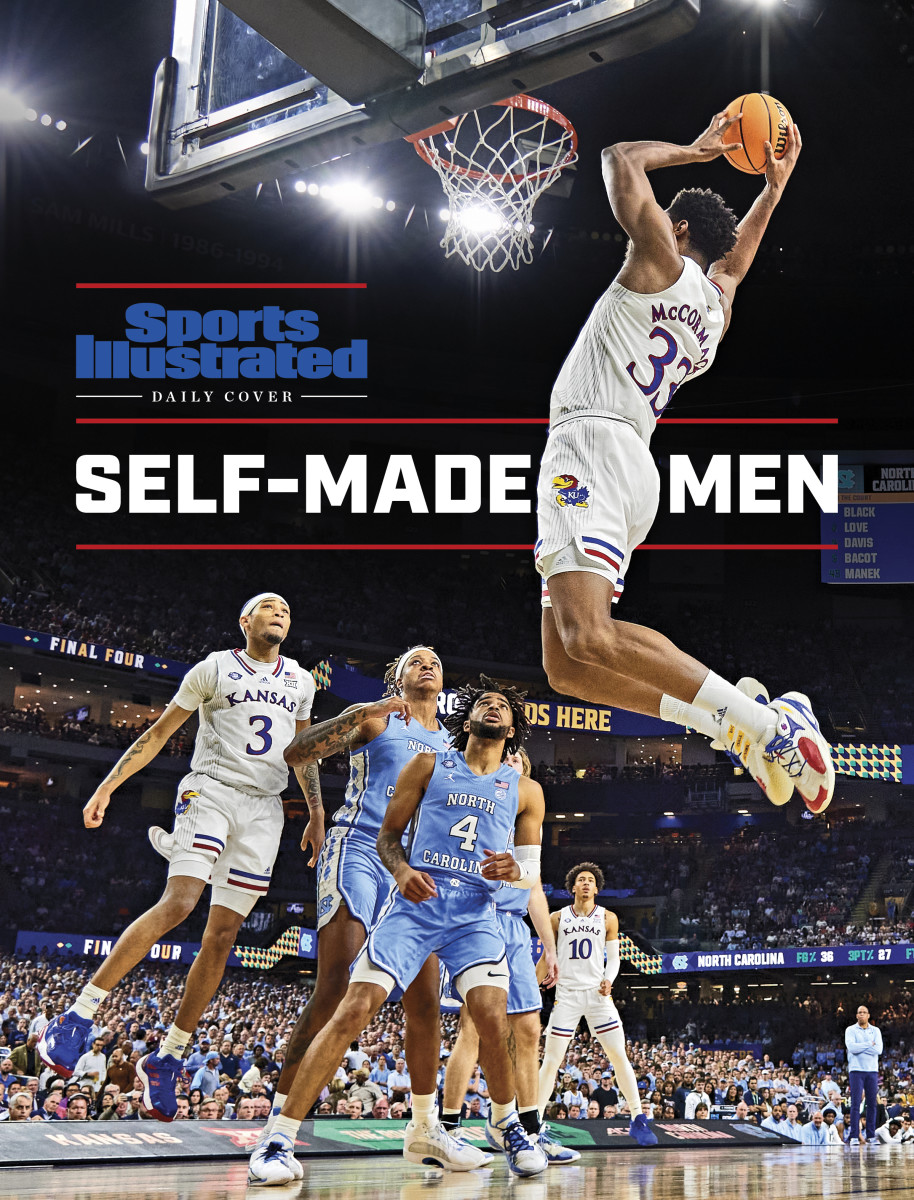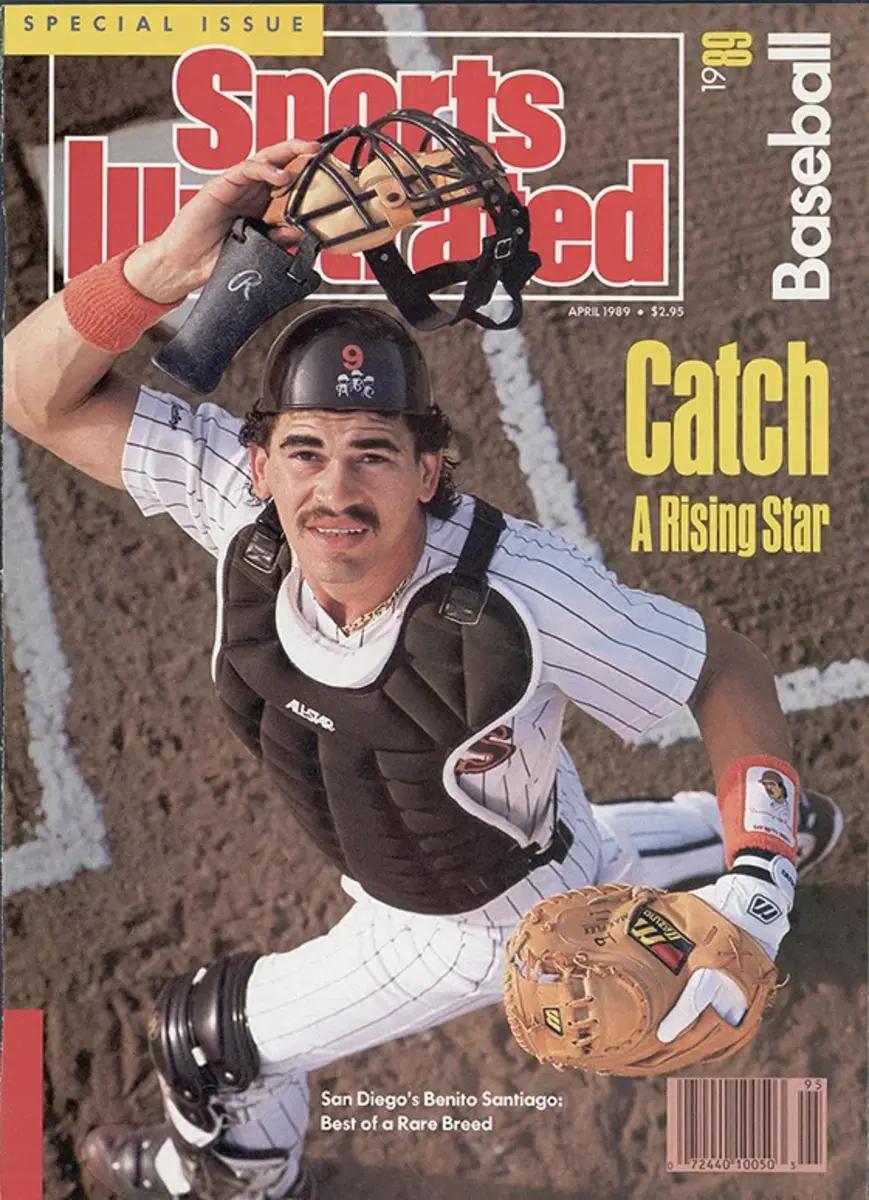SI:AM | Kansas Cuts Down the Nets After a Historic Comeback
Good morning. I’m Josh Rosenblat, who teamed up with Dan Gartland for this edition of SI:AM.
If you’re reading this on SI.com, you can sign up to get this free newsletter in your inbox each weekday at SI.com/newsletters.
What a game
Kansas claimed the men’s national championship with a title-worthy performance in the second half against North Carolina.
The Jayhawks trailed by 15 (40–25) at halftime but came out of the locker room looking like a different team. Kevin Sweeney writes that Kansas coach Bill Self asked his team at halftime, “Which would be harder, being down nine with two minutes left or being down 15 with 20?” The latter scenario is what Self’s Jayhawks faced in 2008, when Mario Chalmers forced overtime with a late three, and Self was ready for another epic recovery.
“While there was no epic shot or defining play like Chalmers’s in this one, Kansas had dug itself a hole that would require a nearly perfect finish to climb out of. And while KU wasn’t quite perfect in that second half, the Jayhawks used a remarkable 31–10 run in its first 10 minutes to pull off a remarkable comeback, then made more plays down the stretch than a Tar Heels team that wouldn’t go away to win their first national championship in 14 years.”
It was the largest comeback in men’s championship game history, surpassing Loyola Chicago’s 16-point comeback against Cincinnati in 1963. The Jayhawks harassed the Tar Heels with defensive pressure and took the lead thanks to some easy buckets in transition. It looked for a while as if Kansas, which was getting blown off the court in the first half, was going to run away with the game.
But Carolina hung around. The Tar Heels’ resilience was unbelievable. (Pat Forde called them “unkillable basketball zombies.”) Despite playing with a six-man rotation and center Armando Bacot visibly hampered by the ankle injury he suffered against Duke, Carolina did not allow the game to get out of hand after Kansas’s run to start the half.
It’s tough to single out one player as the most significant factor in the game (UNC’s Brady Manek and KU’s Christian Braun and Remy Martin really stood out to me) but Bacot’s performance may have been the story of the game. He gutted through that ankle injury for 38 minutes, recording 15 points and 15 rebounds. The ball was in his hands with under a minute to play and Carolina trailing by one. He drove to the hoop but twisted his injured ankle again and turned the ball over. A replay shows that one of the floorboards buckled under his foot, causing him to turn over on his ankle.
Bacot slowly hopped on one foot to the defensive end of the floor, but Kansas did not take advantage of the 5-on-4 situation, allowing the officials to call for time. With Bacot sidelined, Kansas threw the ball to David McCormack in the post after the timeout and he was able to score easily over the smaller Manek, pushing the KU lead to three.
After some more late drama (a terrible UNC possession with desperate attempts at long threes and Kansas’s Dajuan Harris Jr. stepping out of bounds to give the Tar Heels one last chance), the game was over. It’s only fitting that one of the wildest tournaments in NCAA history was capped by such a thriller.
The best of Sports Illustrated

If you read just one of our stories on Kansas’s win, make it Greg Bishop’s Daily Cover:
“For those who remained inside the Superdome, who cheered and hollered and hugged, how the rest of college basketball might feel about this Kansas title had been shelved, for now. What mattered were the scissors held in the hands of the champions who were slicing into nets. The perfectly imperfect NCAA champions refused to let anything diminish their jubilation.”
Kevin Sweeney’s top 25 men’s teams of the 2022–23 season is already out. … Here are Jason Jordan’s 10 most memorable moments of the men’s tournament. … Ahead of Opening Day this week, Will Laws and Nick Selbe have their preseason MLB power rankings. … Marcus Krum looks at the title picture in Europe’s top five men’s soccer leagues.
Around the Sports World
The Kansas City Star has a photo gallery of Jayhawks fans celebrating in the streets of Lawrence. … The Rays traded All-Star outfielder Austin Meadows to the Tigers. … Ben Simmons won’t play for the rest of the regular season or in the play-in tournament. … The Eagles and Saints pulled off a big trade involving eight draft picks. … Fox is reportedly hiring Joe Davis to replace Joe Buck as the play-by-play broadcaster for the World Series. … Pete Carroll reportedly called out NFL owners for their hiring practices in a long monologue.
The top five...
… things I saw yesterday:
5. Auston Matthews’s hat trick to tie a the Maple Leafs’ single-season scoring record
4. Hubert Davis’s enthusiastic mid-game interview
3. James Van Riemsdyk’s quote about Phil Kessel becoming the NHL’s new active ironman streak holder
2. Mariners prospect Julio Rodriguez being informed he’ll be on the Opening Day roster
1. The 2022 “One Shining Moment” montage
SIQ
On this day in 1967, Wilt Chamberlain set a new record for rebounds in a playoff game. How many boards did he have?
- 36
- 41
- 47
- 52
Yesterday’s SIQ: Where did Henry Aaron hit his 714th home run?
Answer: Cincinnati. After hitting 40 homers in 1973, Aaron sat on 713 all winter long, waiting for spring to arrive so he could put the record chase behind him. He wasted no time in tying Ruth.
On Opening Day against the Reds, Aaron swung at the very first pitch he saw from Jack Billingham and smacked it over the wall in right.
But the Braves didn’t want Aaron breaking the record in Cincinnati. Team chairman Bill Bartholomay and manager Eddie Matthews tried to hold him out of the opening series so he could make history in Atlanta. But commissioner Bowie Kuhn “suggested forcefully that it was the obligation of every team to put its best lineup on the field at all times and that any violation of this obligation would be regarded by him as sinful,” Ron Fimrite wrote in SI after Aaron broke the record.
So Aaron was in the lineup on Opening Day but he was benched for the second game of the season, at which point Kuhn threatened “serious consequences” if Aaron was held out of the series finale. He did play, but was pulled after striking out twice and grounding out.
That set the stage for Aaron to surpass Ruth on April 8, 1974, in front of the home fans. After walking in his first at bat, Aaron, just as he did in Cincinnati, swung at the first pitch from Al Downing and began his famous trip around the bases.
From the Vault: April 5, 1989

I really love this photo of Padres catcher Benito Santiago, especially the way it captures him just as he’s throwing away his mask (and don’t miss the “Say No to Drugs” patch with a cartoon of his own face that he’s wearing on his sweatband).
Part of SI’s 1989 MLB preview issue was a feature by Peter Gammons about the league’s dearth of talented catchers. Santiago landed on the cover because he was one of the few good young catchers in the game, having won the ’87 NL Rookie of the Year Award. Many of the league’s other backstops were more than a decade older than him.
“Before 1985, no catcher past the age of 36 had ever caught 100 games in a season,” Gammons wrote. “That year, both 37-year-old Bob Boone and 37-year-old Carlton Fisk passed the 100 mark.”
Boone and Fisk were still in the majors in 1989 and still their teams’ primary catchers at 41. (Boone would go on to catch 131 games for the Royals that year before retiring after the ’90 season, while Fisk played until he was 45.) There were four other catchers in ’88 who were at least 36 years old and receiving regular playing time behind the plate, including Toronto’s Ernie Whitt, who caught 127 games at 36.
Gammons explores all sorts of explanations for why good catchers were so hard to come by. Perhaps parents didn’t want their children getting banged up behind the plate, or coaches were hesitant to subject their best players to the rigors of catching at the expense of other skills. Teams tried their hardest to find good catchers in the draft, but few of those picks worked out.
“The majority of high school and college catchers are the worst athletes,” one scout told Gammons. “Hence, many of the best catchers in the big leagues are converts.”
But players moving behind the plate from other positions also poses a problem for organizations, because they need time to learn their new position.
Gammons shouts out a few young players who people around the game thought would make up the next crop of talented catchers, like Scott Hemond, Francisco Cabrera and Alex Delgado. None of those guys amounted to much, but Gammons does mention “a 16-year-old named Carlos Delgado from Puerto Rico” in the Blue Jays system. Yes, that’s the same Carlos Delgado who went on to become one of the best power hitters of his generation, but only after he gave up catching and moved to first base.
My favorite thing about writing this section of the newsletter every day is flipping through the pages of the old magazine issues online. If you have a few minutes, I really recommend looking at the original layout of the baseball preview section. The photos of catchers colliding with base runners are amazing (and probably explain why good catchers were so hard to come by), and there are some awesome graphics in a first-person piece by Mike Scoscia about catching Orel Hersheisher’s three-hit shutout in the playoffs.
Check out more of SI’s archives and historic images at vault.si.com.
